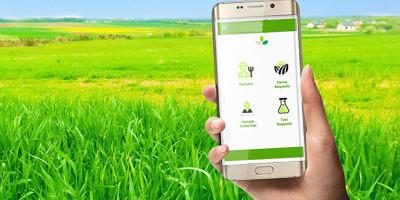Agricultural Systems ( IF 6.6 ) Pub Date : 2021-09-07 , DOI: 10.1016/j.agsy.2021.103248 Ursula Kenny 1 , Áine Regan 1 , Dave Hearne 2 , Christine O'Meara 2

|
Context
There is growing interest and importance for responsible research and innovation (RRI) among academic scholars and policy makers, especially, in relation to emerging technologies in the agricultural context. While the evolution of smart technologies in agriculture has led to an increase of available solutions that can be used by farmers, the RRI process of new farming technology has been minimally detailed in research contributions to date.
Objective
This paper thus aims to describe the first 3 phases of a design thinking process to aid with the development of an agricultural innovation, namely, a geotag photo application for use on smart devices.
Methods
The design thinking approach involved engaging with target users, such as farmers, farm advisors and inspectors, alongside research scientists, app developers and the national agricultural governing body in Ireland to commence the app development process. This paper describes methodology used to elicit the first three major phases of the design thinking approach: empathise, define and ideation. In the first phase a stakeholder mapping activity was conducted, as well as 7 focus groups and 10 interviews with users and other key actors regarding the challenges and needs related to using the app. The define phase included a reflection of results from the first phase and subsequent development of user-personas and problem statements to inform the third phase. The third phase, ideation, consisted of four interactive user-centred workshops, focusing on app needs, in which ideas and solutions were developed and prioritised.
Results and conclusions
The design thinking approach supported multiple stakeholders to express and evaluate the benefits and challenges they associated with the initial development phases involved in designing a new geotag photo app. It also revealed that, by including farmers and additional actors in developing new farming technology enables technology developers to harness the full value of multiples types of knowledge and expertise. In conclusion, future research on innovation development should consider that by enabling engagement among a wide variety of actors, such as that offered by the initial stages of design thinking, and attending to a greater diversity of values is essential to the development of a responsible, and responsive, digital tool.
Significance
This study is the first to methodically document the early stages of developing a geotag smartphone app using a design thinking approach. This paper will therefore benefit other scholars aiming to include farmers, and other agricultural stakeholders to have an input on the agri-tech development decisions that will ultimately impact their farming lives.
中文翻译:

与农业社区共情、定义和构思,为智能设备开发带有地理标记的照片应用程序:一种设计思维方法
语境
学术学者和政策制定者对负责任的研究和创新 (RRI) 的兴趣和重要性与日俱增,尤其是在农业背景下的新兴技术方面。虽然农业智能技术的发展导致农民可以使用的可用解决方案有所增加,但迄今为止,新农业技术的 RRI 过程在研究贡献中的细节很少。
客观的
因此,本文旨在描述设计思维过程的前 3 个阶段,以帮助发展农业创新,即用于智能设备的地理标签照片应用程序。
方法
设计思维方法涉及与目标用户(例如农民、农场顾问和检查员)以及研究科学家、应用程序开发人员和爱尔兰的国家农业管理机构合作,以开始应用程序开发过程。本文描述了用于引出设计思维方法的前三个主要阶段的方法:移情、定义和构思。在第一阶段,开展了利益相关者绘图活动,以及 7 个焦点小组和 10 次与用户和其他关键参与者的访谈,讨论与使用该应用程序相关的挑战和需求。定义阶段包括反映第一阶段的结果以及随后开发的用户角色和问题陈述,以便为第三阶段提供信息。第三阶段,构思,包括四个以用户为中心的互动研讨会,
结果和结论
设计思维方法支持多个利益相关者表达和评估他们与设计新地理标签照片应用程序的初始开发阶段相关的好处和挑战。它还透露,通过让农民和其他参与者参与开发新的农业技术,技术开发人员能够利用多种类型的知识和专业知识的全部价值。总之,未来对创新发展的研究应该考虑到,通过促进广泛的参与者之间的参与,例如设计思维的初始阶段所提供的参与,以及关注更多样化的价值观对于发展负责任的、和响应迅速的数字工具。
意义
这项研究首次有条不紊地记录了使用设计思维方法开发地理标记智能手机应用程序的早期阶段。因此,本文将使旨在让农民和其他农业利益相关者参与进来的其他学者对最终影响他们农业生活的农业技术发展决策提供意见。



























 京公网安备 11010802027423号
京公网安备 11010802027423号